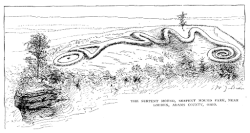Formative stage
North American prehistory |
|---|
 |
Several chronologies in the archaeology of the Americas include a Formative Period or Formative stage etc. It is often sub-divided, for example into "Early", "Middle" and "Late" stages.
The Formative is the third of five stages defined by
Sometimes also referred to as the "Pre-Classic stage", it followed the
- The Lithic stage
- The Archaic stage
- The Formative stage
- The Classic stage
- The Post-Classic stage
The dates, and the characteristics of the period called "Formative" vary considerably between different parts of the Americas. The typical broad use of the terms is as follows below.
North America
In the classification of North American chronology, the Formative Stage or "Neo-Indian period" is a term applied to theoretical North American cultures that existed between 1000 BC and 500 AD. There are alternative classification systems, and this ranking would overlap what others classify as the Woodland period cultures.
The Formative, Classic and post-Classic stages are sometimes incorporated together as the Post-archaic period, which runs from 1000 BC to the present. Sites and cultures include:
.Meso-America
In
South America
In the
See also
References
- OCLC 19750309.
- ISBN 978-0-226-89888-9.
- ^ "Method and Theory in American Archaeology". Gordon Willey and Philip Phillips. University of Chicago. 1958. Archived from the original on 2012-06-28.
External links
 Media related to Formative period in the Americas at Wikimedia Commons
Media related to Formative period in the Americas at Wikimedia Commons
